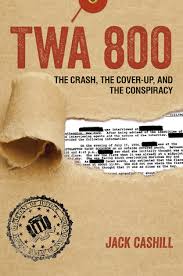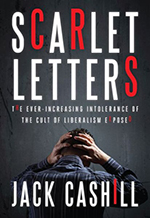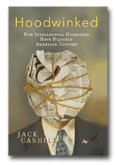Uh, Hillary, Your Hubby Caused the 2008 Recession
_____
Order Jack Cashill's latest book, TWA 800: The Crash, the Cover-Up, and the Conspiracy
______
Order Jack Cashill's book,
Scarlet Letters
___
Get your copy of Jack Cashill's book, "You Lie!"
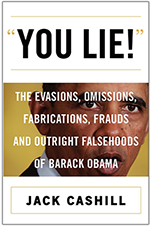
___
Get your copy of Deconstructing Obama
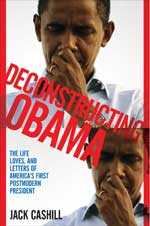
___
Jack Cashill's book:
Hoodwinked: How Intellectual Hucksters have Hijacked American Culture
© Jack Cashill
AmericanThinker.com - September 28, 2016
On the debate stage Monday night, Hillary Clinton smugly repeated the big lie that Democrats have been telling with something close to impunity since 2008.
“We had the worst financial crisis, the Great Recession, the worst since the 1930s,” said Hillary. “That was in large part because of tax policies that slashed taxes on the wealthy, failed to invest in the middle class, took their eyes off of Wall Street, and created a perfect storm.”
In fact, tax policies had almost nothing to do with the recession of 2008. What caused the market crash was the collapse of the subprime market. If that collapse had an architect-in-chief, his name was Bill Clinton. This is not a speculation. It is an easily documented fact.
When Bill Clinton was inaugurated in 1993, the homeownership rate was lower than it had been when Richard Nixon was inaugurated in 1969. Despite increasing prosperity, despite the growth in the condominium market, the numbers were declining.
The Clintons wanted to push those numbers up. If they had been inclined to look, the explanation for the decline was simple enough: the collapse of the two-parent family. From 1970 to 2000, single-parent households, disproportionately black, increased 60 percent. In that same period, married couples with their own children fell from 40 percent of all households to just 24 percent.
The Clintons and their media allies refused to acknowledge family breakdown as a problem—remember “Murphy Brown”--let alone as an explanation for the disparity in home-ownership rates. Their preferred explanation for just about everything unpleasant, then as now, was the inevitable racism. This they could and would freely impute to less enlightened Americans, “the deplorables” as they would come to be known.
The Clintons found the confirmation they were looking for in a 1991 study by the Federal Reserve. According to the study, 61 percent of blacks had been approved in their quest for government backed home loans as compared to 77 percent for whites. Bingo!
To make the racism story line work, the Clintons had to ignore another significant set of data, namely, default rates. A comprehensive HUD study of FHA loans for the years 1992-1999 found that blacks were defaulting more than twice as frequently as whites, and Hispanics were defaulting three times more frequently. If minorities had been held to a higher standard, their default rates should have been lower than whites, not higher. This was obvious.
No matter. As early as 1993, HUD began to bring legal action against those mortgage bankers who declined a higher percentage of minorities than whites. In 1995, the Clinton administration put teeth in Jimmy Carter’s 1977 Community Reinvestment Act (CRA), which had merely “encouraged” financial institutions to “help meet the credit needs of local communities.” Under Clinton, regulators moved from encouraging to strong-arming.
The regulators were backed by the street-level bullyboy tactics of the late and unlamented ACORN, shorthand for Association of Community Organizations for Reform Now. Historically, banks had been reluctant to offer home loans to people who might not pay them back, and so ACORN set out to embarrass bankers into overcoming that reluctance.
A sympathetic media romanticized ACORN and turned what might have been a nuisance for the banks into a public relations nightmare. As the New York Times reported approvingly, “The nation’s largest banks have come to the negotiating table just to silence objections that could derail or create costly delays to a merger.”
To make ACORN’s task easier, the Clinton administration demanded that banks quantify the progress they were making in giving loans to LMIs—people of “low and moderate income.” The administration encouraged banks to use “innovative or flexible” lending practices to reach their LMI numbers.
Meanwhile HUD, which Congress had made the regulator of Fannie Mae and Freddie Mac in 1992, began to pressure these agencies to set numerical goals for affordable housing, even if that meant buying subprime mortgages. The media cheered the agencies on. A September 1999 Times article commended Fannie Mae for prodding banks to provide mortgages to those whose credit was “not good enough to qualify for conventional loans.”
With a gun to their head, the lenders turned to Fannie Mae and Freddie Mac to relieve them of the imprudent loans they were now being forced to make. Before the 1990s, Fannie and Freddie had sufficiently tough lending standards that default was not much of an issue. That would change.
In 1999, the Clintons’ newly appointed CEO, Franklin Delano Raines, was boasting of the changes Fannie Mae had already made and the changes to come. As he told the Times, Fannie Mae had lowered the down payment requirements for a home and now planned to extend credit to borrowers a “notch below its traditional standards.” That notch was spelled subprime.
Given the greater risk, subprime prospects typically have had to pay more interest to secure a loan. For investors, high interest translated into high yield. In October 1997, the investment banks Bear Stearns and First Union Capital Markets underwrote the first securitization of subprime loans for a total of $385 million.
The back-patting press release announcing the launch hit all the bubble-era hot buttons: these “affordable” and “flexible” mortgages offered the possibility of credit for “low and moderate income families” in “traditionally underserved markets.”
These securities proved enormously popular. They promised a 7.5 percent yield in a low-interest environment and, if that were not enough, a chance to cleanse one’s venal Wall Street soul by doing what appeared to be a social good.
To rally the base a week before the 2000 election, the Clinton administration announced historic new regulations that would put a further squeeze on Fannie Mae and Freddie Mac. “These new regulations will greatly enhance access to affordable housing for minorities, urban residents, new immigrants and others left behind, giving millions of families the opportunity to buy homes,” said HUD Secretary, now New York State governor, Andrew Cuomo.
The regs upped Fannie and Freddie’s “affordable housing” quota from 42 to 50 percent. “We have not been a major presence in the subprime market,” boasted CEO Raines, “but you can bet that under these goals, we will be.”
Raines deflected criticism by focusing on Fannie Mae’s success at social engineering. “We have met or exceeded our affordable housing goals, even as they have increased,” he told the Congressional Finance Committee in late 2003. He also shared the company’s “voluntary goal,” namely, to “lead the market in serving minority families.”
When President Bush expressed concern about the precarious state of Fannie and Freddie in June 2004, he triggered seventy-six Democrats in Congress to sign a letter warning that “an exclusive focus on safety and soundness is likely to come, in practice, at the expense of affordable housing.”
Despite early signs of impending disaster, Congress kept the pressure on. On June 27, 2005, Barney Frank, the ranking Democrat on House Financial Services Committee, took to the House floor to chide those who worried about a housing bubble.
“You are not going to see the collapse that you see when people talk about a bubble,” he lectured his colleagues. “So those on our committee in particular are going to continue to push for homeownership.”
And push they did. Subprime credit had become, what one wag called, “the mad cow disease of structured finance.” With a clean bill of health from the media and the Democrats, and a shockingly ignorant assist from Wall Street, the infected product was allowed to poison the entire economy.
No sweat for Hillary. The final convulsion—Phew!--occurred on George Bush’s watch. 
Jack Cashill’s newest book, TWA 800: The Crash, the Cover up, the Conspiracy can now be ordered at Amazon.

